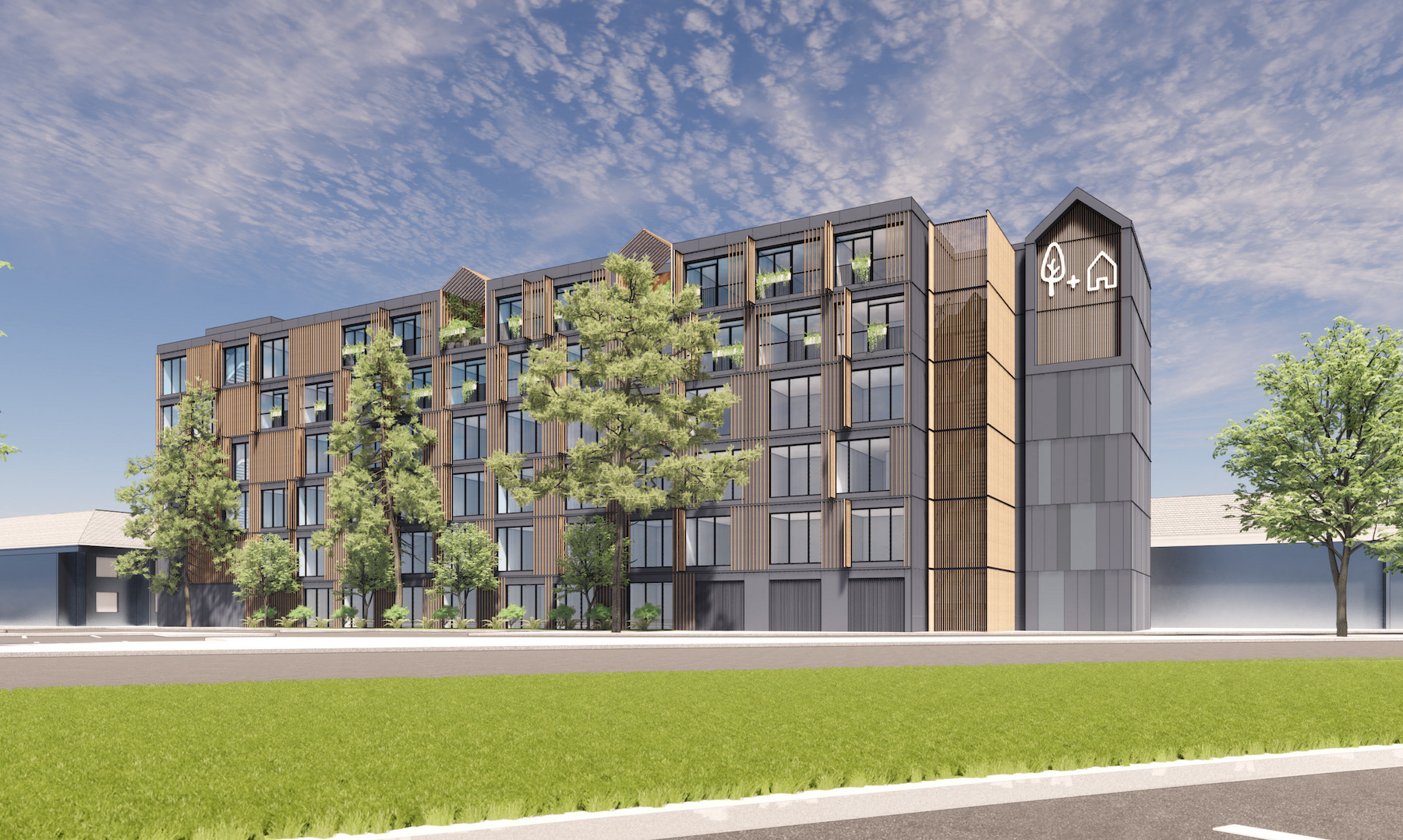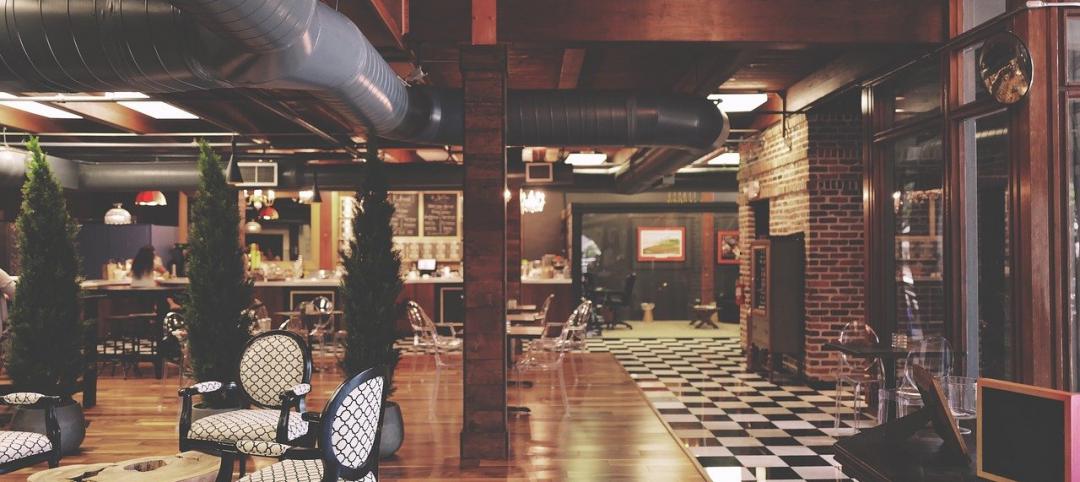Next February, FullStack Modular, a leading supplier of prefabricated modules, is scheduled to begin production for its first project in California, a, 86,000-sf, six-story, 143-room hotel that will be the Treehouse Hotel brand’s debut in the United States.
Starwood Capital Group launched Treehouse in 2019 as a eco-friendly lifestyle concept. It currently operates three properties in the United Kingdom, and is developing the U.S. project through its brands management company SH Hotels and Resorts. Its American hotel will be located in Sunnyvale, Calif., and is expected to open late next year. (Starwood is also repurposing several existing structures onsite for additional hotel rooms and suites.)
In an interview with BD+C, Roger Krulak, FullStack Modular’s president and founder, said that his company will produce 200 modules for this project from its manufacturing plant in Portland, Ore. (FullStack’s other plant is in Brooklyn, N.Y.) He estimates that the production would take less than six months, and assembly another three months. Scottsdale, Ariz.-based Synergy Modular is the project’s general contractor.
Krulak believes that Starwood chose FullStack Modular for its fully integrated system approach: its modules are delivered with electrical, plumbing, and mechanical components and systems installed. The building’s façade is also installed at the factory, as are each units’ fixtures and finishes. The building doesn’t require a concrete core and, where necessary, can be rigged at the factory for seismic resistance. Even furniture can be included. The only on-site construction, said Krulak, involves the building’s hallways and elevators.
According to Starwood, the majority of Treehouse’s rooms will provide private outdoor spaces that include ground floor patios and balconies and terraces on the upper floors.
“The FullStack Modular system is one of the most volumetric modular systems anywhere,” said Andy Nuessle, Synergy Modular’s president, in a prepared statement. “The hotel is 100 percent modular from the foundation to the roof.”
Starwood Capital has not disclosed the cost of the Sunnyvale Treehouse Hotel. On its website, FullStack Modular states that, in general, modular production reduces construction costs by as much as 20 percent, construction time by as much as 50 percent, and construction waste by as much as 67 percent. Krulak estimated that the Sunnyvale project will be completed 30 to 40 percent faster than it would were it build using convention on-site construction methods.
A sliver, but increasing

The Modular Building Institute estimates that buildings assembled from modules produced offsite accounted for 5.52 percent of all new construction in North America in 2021. That represented a doubling of market share in five years, and Tom Hardiman, the Institute’s executive director, told the website Construction Dive that he expects modular’s share to rise to 10 percent by 2026.
Krulak is also optimistic about modular’s growth, especially on the residential side. “Housing in the U.S. is at a huge deficit, and construction has no capacity to meet that need. So off-site solutions are picking up significantly. We get a call almost every day.”
Krulak said that FullStack Modular is looking at “a number of opportunities” in the U.S. and internationally. Earlier this month, the company announced it had entered into a strategic alliance with Saudi Arabian Baytur Construction to pursue opportunities for Vision 2030, a large-scale hospitality and urban tourism initiative whose key goal is to increase the Kingdom’s overall hospitality capacity by more than 70,000 hotel rooms.
Related Stories
Hotel Facilities | May 5, 2021
AC Hotel Fort Lauderdale Sawgrass Mills/Sunrise completes
Stantec designed the project.
Hotel Facilities | Apr 21, 2021
First newly constructed Signia by Hilton Hotel to be built in Atlanta
Signia by Hilton is a new upscale brand from Hilton Worldwide Holdings Inc.
AEC Tech | Mar 4, 2021
The Weekly show, March 4, 2021: Bringing AI to the masses, and Central Station Memphis hotel
This week on The Weekly show, BD+C editors speak with AEC industry leaders about the award-winning Central Station Memphis hotel reconstruction project, and how Autodesk aims to bring generative design and AI tools to the AEC masses.
Market Data | Feb 24, 2021
2021 won’t be a growth year for construction spending, says latest JLL forecast
Predicts second-half improvement toward normalization next year.
Hotel Facilities | Feb 16, 2021
Santa Monica Professional Building restored into a modern hotel
Howard Laks Architects designed the project.
Modular Building | Jan 26, 2021
Offsite manufacturing startup iBUILT positions itself to reduce commercial developers’ risks
iBUILT plans to double its production capacity this year, and usher in more technology and automation to the delivery process.
Daylighting | Jan 16, 2021
Daylighting system creates 'an oasis in the city' for renovated hotel in downtown Minneapolis
Solatube daylighting systems were used to bring natural light into the lobby of the Midland Bank building in Minneapolis.
Giants 400 | Dec 16, 2020
Download a PDF of all 2020 Giants 400 Rankings
This 70-page PDF features AEC firm rankings across 51 building sectors, disciplines, and specialty services.
Giants 400 | Dec 3, 2020
2020 Hotel Sector Giants: Top architecture, engineering, and construction firms in the U.S. hospitality sector
Gensler, Jacobs, and Suffolk Construction top BD+C's rankings of the nation's largest hotel sector architecture, engineering, and construction firms, as reported in the 2020 Giants 400 Report.
















